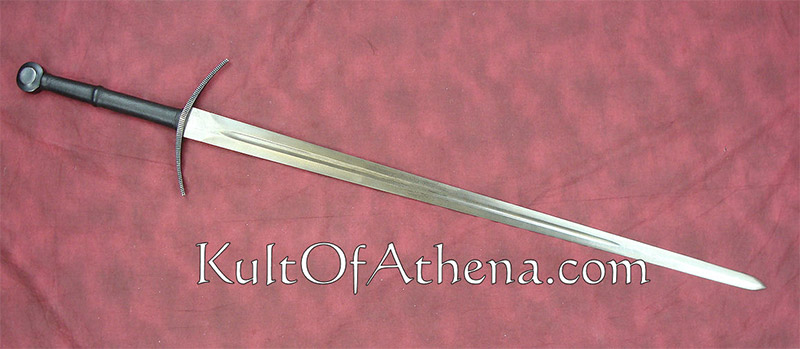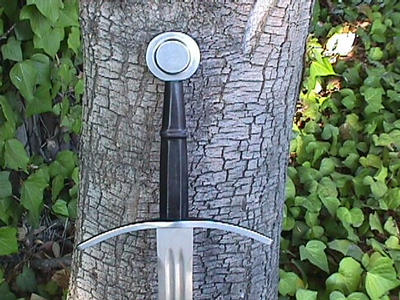The term "longsword" is very general and carried various meanings from the dawn of the iron age up to the appearance of true two-handers. In the most common definition, a bastard sword
is a long sword.
A lot of bastard swords wouldn't be wielded one-handed with a
shield by anyone sane or normal-sized, but still default into the hand-and-a-half category nonetheless. This one does lean more in the direction of a proper two-hander.
I'll take a crack at classifying it until an actual expert corrects me:
Firstly, there's a good chance it would have been considered 'unclassified' as it does have certain "improvised" (made up by Hanwei) design cues about it, but it's not entirely impossible for... c.1350-1420?
Roughly type XIX blade, just because it's very generic except for the ricasso. However those usually had a fuller extending all the way through the ricasso and not as far down the blade, and on a sword of this magnitude the ricasso would have probably been long enough to grasp. Thus it looks more like a poor supersized rendition of a one-handed XIX (in both blade and hilt) than a reproduction of the real XIX's with 38+ inch blades. The tip could be seen on anything with a tapered diamond (many types); it would need to relate to some consistency elsewhere on the sword to say anything about it. It's kind of just 'there'.
Pommel is type J.
Cross is a decorated, curved type I. I was leaning toward type 7, but it looks just like the one on XIV.6 in
Records, which is a (paraphrased) "Sophisticated form of I".
Edit; It's strange how it's lot more easy to date than classify. While the individual features don't match one another, they all coexisted (on dramatically differing swords of dramatically differing lengths) at the same time.

